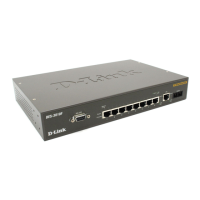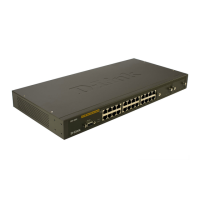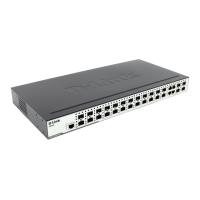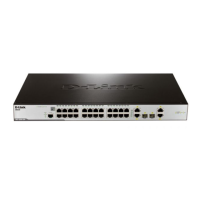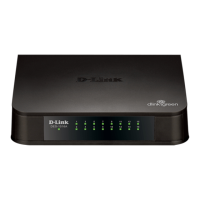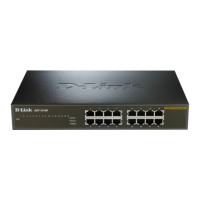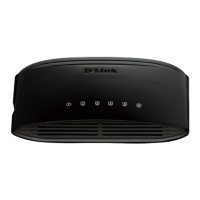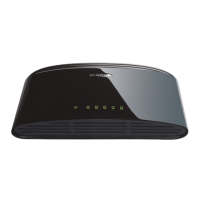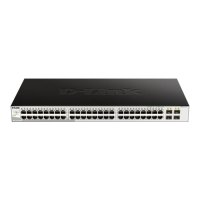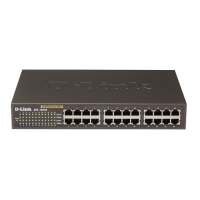DES-3010F/DES-3010FL/DES-3010G/DES-3018/DES-3026 Fast Ethernet Switch Manual
SMTP Service
SMTP or Simple Mail Transfer Protocol is a function of the Switch that will send switch events to mail recipients based on
e-mail addresses entered using the commands below. The Switch is to be configured as a client of SMTP while the server
is a remote device that will receive messages from the Switch, place the appropriate information into an e-mail and deliver
it to recipients configured on the Switch. This can benefit the Switch administrator by simplifying the management of
small workgroups or wiring closets, increasing the speed of handling emergency Switch events and enhancing security by
recording questionable events occurring on the Switch.
The Switch plays four important roles as a client in the functioning of SMTP:
• The server and server virtual port must be correctly configured for this function to work properly. This is
accomplished in the SMTP Service Settings window by properly configuring the SMTP Server Address and
SMTP Server Port fields.
• Mail recipients must be configured on the Switch. This information is sent to the server which then processes the
information and then e-mails Switch information to these recipients. Up to 8 e-mail recipients can be configured on
the Switch using the SMTP Service Settings window by configuring the Mail Receiver Address field.
• The administrator can configure the source mail address from which messages are delivered to configured
recipients. This can offer more information to the administrator about Switch functions and problems. The personal
e-mail can be configured using the SMTP Service Settings window and setting the Self Mail Address field.
• The Switch can be configured to send out test mail to first ensure that the recipient will receive e-mails from the
SMTP server regarding the Switch. To configure this test mail, the SMTP function must first be enabled by
configuring the SMTP State in the SMTP Service Settings window and then by sending an email using the SMTP
Service window. All recipients configured for SMTP will receive a sample test message from the SMTP server,
ensuring the reliability of this function.
The Switch will send out e-mail to recipients when one or more of the following events occur:
• When a cold start occurs on the Switch.
• When a port enters a link down status.
• When a port enters a link up status.
• When SNMP authentication has been denied by the Switch.
• When a switch configuration entry has been saved to the NVRAM by the Switch.
• When an abnormality occurs on TFTP during a firmware download event. This includes in-process, invalid-file,
violation, file-not-found, complete and time-out messages from the TFTP server.
• When a system reset occurs on the Switch.
Information within the e-mail from the SMTP server regarding switch events includes:
• The source device name and IP address.
• A timestamp denoting the identity of the SMTP server and the client that sent the message, as well as the time and
date of the message received from the Switch. Messages that have been relayed will have timestamps for each
relay.
• The event that occurred on the Switch, prompting the e-mail message to be sent.
• When an event is processed by a user, such as save or firmware upgrade, the IP address, MAC address and User
Name of the user completing the task will be sent along with the system message of the event occurred.
• When the same event occurs more than once, the second mail message and every repeating mail message following
will have the system’s error message placed in the subject line of the mail message.
The following details events occurring during the Delivery Process.
• Urgent mail will have high priority and be immediately dispatched to recipients while normal mail will be placed
in a queue for future transmission.
• The maximum number of untransmitted mail messages placed in the queue cannot exceed 30 messages. Any new
messages will be discarded if the queue is full.
• If the initial message sent to a mail recipient is not delivered, it will be placed in the waiting queue until its place in
the queue has been reached, and then another attempt to transmit the message is made.
• The maximum attempts for delivering mail to recipients is three. Mail message delivery attempts will be tried
every five minutes until the maximum number of attempts is reached. Once reached and the message has not been
successfully delivered, the message will be dropped and not received by the mail recipient.
72
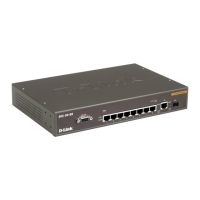
